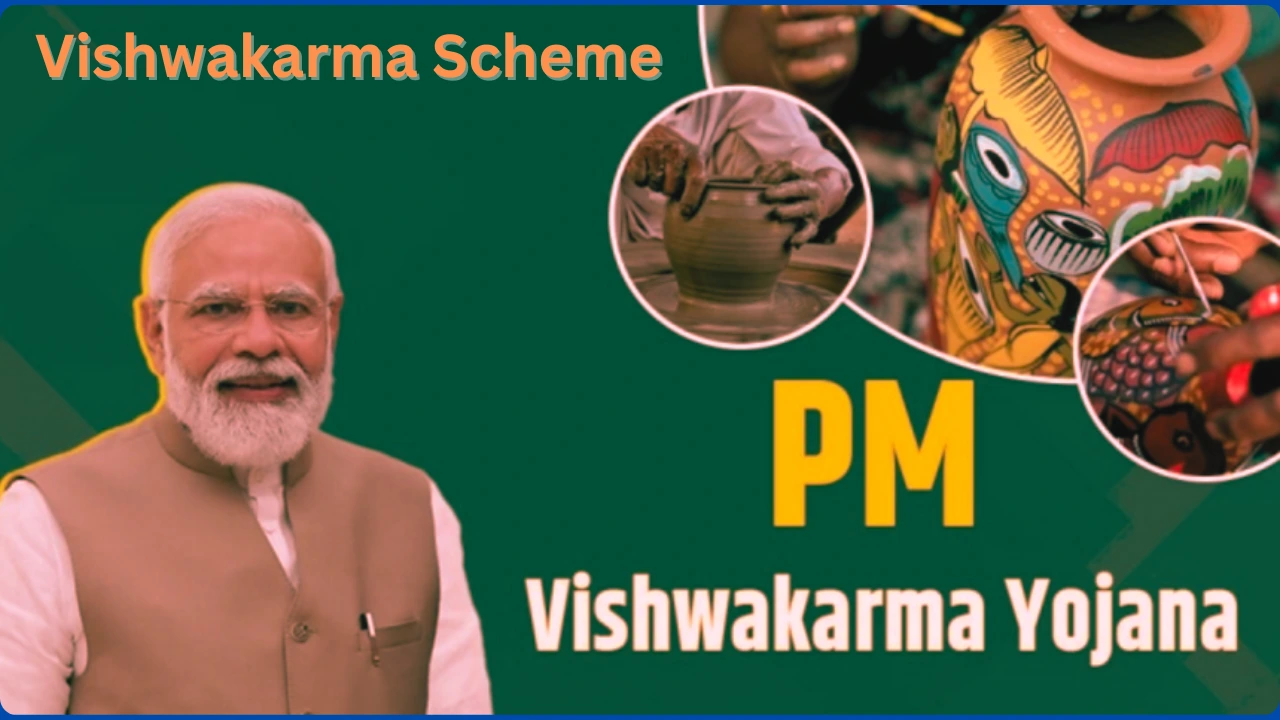The Vishwakarma Scheme, introduced by the Government of India, is a landmark initiative aimed at uplifting traditional artisans and craftspeople. Recognizing the invaluable contributions of these workers to India’s cultural and economic heritage, the scheme offers financial aid, skill enhancement, modern tools, and market access to sustain and modernize their crafts.
This article provides an in-depth look at the Vishwakarma Scheme, including its objectives, benefits, eligibility criteria, and how it is transforming the lives of India’s artisans.
Objectives of the Vishwakarma Scheme
The scheme was designed with specific objectives to promote self-reliance among artisans:
- Support Traditional Trades: Provide financial assistance and resources to artisans in trades like blacksmithing, carpentry, and weaving.
- Skill Development: Enhance the skills of artisans through modern training programs while preserving traditional methods.
- Market Access: Connect artisans to domestic and global markets, ensuring better revenue for their products.
- Promote Sustainability: Integrate artisans into sustainable production models by introducing modern techniques and tools.
- Encourage Self-Reliance: Reduce dependence on middlemen, empowering artisans to market and sell their products directly.
Key Features of the Vishwakarma Scheme
| Feature | Description |
| Financial Assistance | Provides monetary support for purchasing raw materials and modern tools. |
| Skill Development Programs | Offers training to artisans for skill enhancement and adoption of modern techniques. |
| Subsidized Tools | Distributes advanced tools and equipment at subsidized rates to improve productivity. |
| Market Linkages | Connects artisans to e-commerce platforms, trade fairs, and export markets. |
| Zero-Interest Loans | Enables artisans to expand their businesses with interest-free loans. |
| Health and Social Security | Includes health insurance and access to social welfare schemes for artisans and their families. |
Trades Supported by the Vishwakarma Scheme
The Vishwakarma Scheme targets a wide range of traditional trades, including:
- Carpentry
- Blacksmithing
- Pottery
- Handloom Weaving
- Stone Crafting
- Goldsmithing
- Toy Making
- Tailoring
These trades represent India’s rich heritage and are vital to the country’s economy.
Benefits of the Vishwakarma Scheme
1. Economic Empowerment: Artisans receive financial aid and interest-free loans, helping them sustain and grow their businesses.
2. Skill Enhancement: Training programs introduce modern techniques and tools to improve efficiency and quality.
3. Market Access: Artisans gain exposure to national and international markets, ensuring better revenue for their crafts.
4. Social Security: The scheme includes health insurance and other welfare measures, improving the overall quality of life.
5. Preservation of Heritage: By supporting traditional trades, the scheme ensures the preservation of India’s cultural legacy.
Eligibility Criteria for the Vishwakarma Scheme
To apply for the Vishwakarma Scheme, applicants must meet the following conditions:
- Citizenship: Must be a citizen of India.
- Trade Verification: Must be engaged in one of the supported traditional trades.
- Income Limit: Priority is given to artisans from economically weaker sections.
- Age: Applicants must be between 18 and 50 years of age.
- Bank Account: A valid bank account is required for direct benefit transfer (DBT).
Required Documents
To apply for this Scheme, artisans need to provide:
- Aadhaar Card (for identity verification)
- Proof of Trade (e.g., certifications, photos of work)
- Bank Account Details
- Income Certificate (if applicable)
- Recent Passport-Sized Photograph
How to Apply for the Vishwakarma Scheme
Online Application
- Visit the Official Portal: Access the government’s dedicated this Scheme’s portal.
- Register an Account: Create a login using your mobile number and email ID.
- Fill Out the Application Form: Provide personal details, trade information, and income details.
- Upload Required Documents: Attach scanned copies of necessary documents.
- Submit the Form: Review the information and submit your application.
- Track Your Application: Use the application reference number to monitor the status online.
Offline Application
- Visit the Local Office: Approach the district’s artisan welfare office or related government department.
- Fill Out the Form: Complete the application form with accurate details.
- Attach Documents: Provide copies of required documents along with the form.
- Submit the Form: Submit the form to the concerned official and obtain an acknowledgment receipt.
Challenges and Solutions
Challenges
- Lack of Awareness: Many artisans are unaware of the scheme or its benefits.
- Limited Digital Literacy: Artisans may face difficulties in navigating online platforms for application and marketing.
- Competition with Machine-Made Goods: Traditional crafts often face challenges competing with cheaper, mass-produced items.
Solutions
- Awareness Campaigns: Conduct workshops and outreach programs to educate artisans about the scheme.
- Digital Training: Provide training in e-commerce and digital marketing to artisans.
- Subsidized Production Costs: Offer subsidies on raw materials and tools to help artisans remain competitive.
Impact of the Vishwakarma Scheme
This scheme has significantly impacted artisans by:
- Boosting Income Levels: Financial aid and market access have increased revenue for artisans.
- Preserving Traditional Crafts: The scheme has ensured that traditional skills are passed on to future generations.
- Improving Living Standards: Welfare measures like health insurance have enhanced the quality of life for artisans and their families.
- Encouraging Entrepreneurship: Many artisans have transitioned into successful entrepreneurs by leveraging the scheme’s benefits.
Conclusion
The Vishwakarma Scheme is a transformative initiative that not only empowers India’s traditional artisans but also preserves the country’s rich cultural heritage. By offering financial aid, skill development, and market access, the scheme helps artisans thrive in a competitive market while promoting sustainable practices.
For artisans, this scheme is more than just financial assistance—it is an opportunity to sustain their craft, improve their livelihood, and gain recognition for their invaluable contributions to society. With continued awareness and effective implementation.
Read More Blogs Click Here

